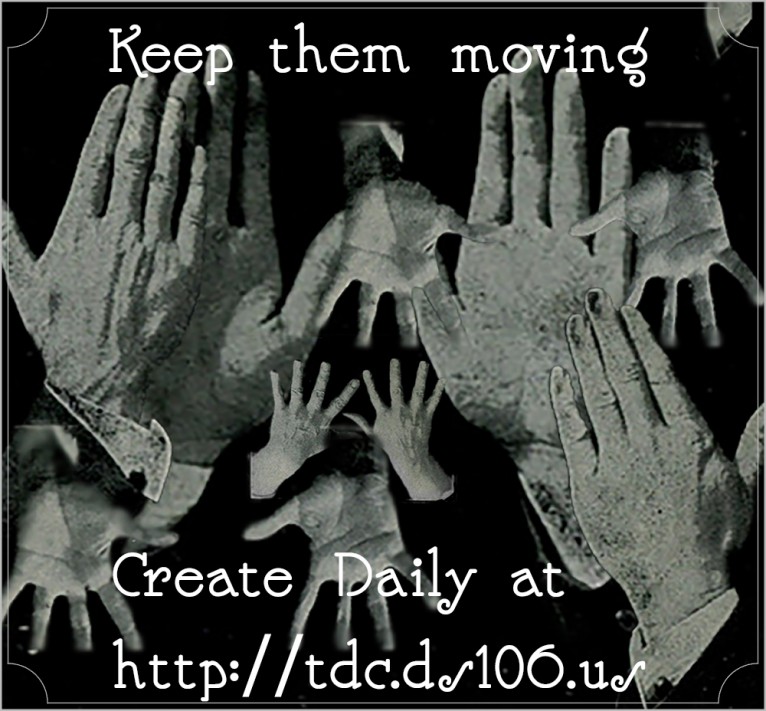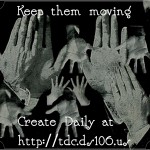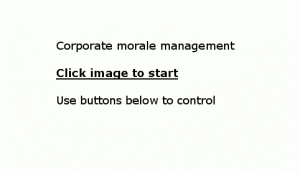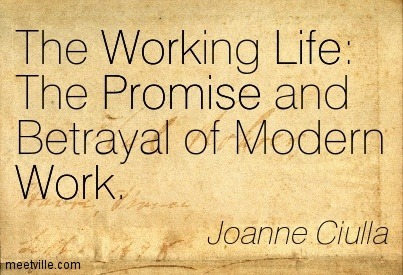It has been a while since I have written a post here. I have been posting my art (See? calling it ‘art’ not ‘artefact’ anymore 🙂 but not narrating the process. The truth is that narrating process is hard and as I get more into making art, I am less able to run the ‘witness loop’ to be able to accurately explain my creation process. This is, of course, natural when creative flow happens. We ‘lose’ ourselves. What this means is that we lose the judging mind and align in activity.
I want to make an effort to narrate this daily create because I believe this to be my graduation assignment!
There are many goals to set going forward, but for the first time since I started participating in DS106 I have made something that is inherently and standalone pleasing to me. Awesome feeling. I have had glimpses of it when making animated gifs but this time the intensity was different.
It started with me scanning the daily create site and seeing what others had done for today. The prompt made me go: meh. I am in the middle of another project for our Summer DS106 Story doing a trailer in the style of a silent movie (something that is proving more challenging than I expected). May be I get one with that and forget about the daily create today. Or may be not.
I watched a video today that admonished me: "The most dangerous thought you can have as a creative person is to think you know what you’re doing.“ I decided to make an animated gif, I know how to do that.
I had the idea of many hands moving and that gave me the slogan you see in the image. Hands were dancing in my head and I started, predictably for those who know me, to make a gif.
Where to find hands? @cogdogblog introduced me yesterday to the most beautiful resource I have found in a long time The Public Domain Review. Looking for images was a great excuse to lose myself there for a while. Actually, I found what I wanted straight away. The physiognomy of hands in 1917. Use these images in Photoshop and make the hands dance whilst the slogan pops up. Boom. Not Boom. I could not keep the background still whilst the hands danced.
Each time I watched all my layers I could hear a faint voice saying – it looks great as a still image. I ignored it for a while and kept trying to make the hands dance. I knew what I was doing. Until I was willing to suspend knowing.
I abandoned the idea of an animated gif and looked at ‘what the marble wanted to be’ as they say Michelangelo thought of sculpture. Not that I am comparing the output, just the process. I spent hours playing with Photoshop selecting, blending positioning the hands. I tried many fonts and colours and then I noted that this was a kind of ‘silent film’ poster.
Off I went down another Google rabbit hole. Find a font that suits the silent era. I have never installed a font, I just use what is there and match it as best I can. Lazy creator. This time was different. I wanted to shape the poster as it seemed to want to be shaped. Worked out how to install font and restarted machine. Boom. Like. Now I thought about the inter-title screens in silent films. It needs a frame. I looked and could not find anything.
I remembered that Photoshop now has Picture Frame to use. I needed a tutorial for how to use that. I played around until I made something the fitted the style.
Boom, my poster for today.
It really helps not to be struggling so much with the tools. As Ira Glass reminds us ‘our taste is impeccable, it take a couple of years for the execution to start to align with our taste and we know when we are falling short’. Well, today I did not fall short. There is a big difference between quickly getting something done, and losing oneself in the process of creation. I have known that from writing all my life, but this is the first time I experience it with digital art. Thank you daily create for the ‘boring’ prompt today.




